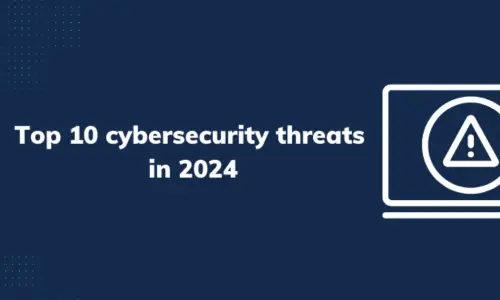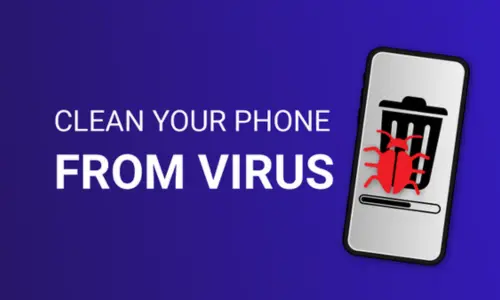Top 10 Cybersecurity Threats You Need to Know About in 2024
As we advance further into 2024, the landscape of cybersecurity threats continues to evolve. With the increasing sophistication of cyber-attacks, it’s crucial to stay informed about the latest threats to safeguard your digital assets. This guide will walk you through the top 10 cybersecurity threats you need to be aware of in 2024, providing insights into how these threats work and how you can protect yourself against them.
1. Ransomware Attacks
Ransomware remains a significant threat in 2024, with attackers using sophisticated methods to encrypt files and demand ransom payments for decryption keys. These attacks can cripple organizations and individuals by locking access to critical data.
How It Works:
- Infection Vector: Often delivered through phishing emails or malicious downloads.
- Encryption: Ransomware encrypts files on the victim’s system, making them inaccessible.
- Ransom Demand: Attackers demand payment, usually in cryptocurrency, to restore access.
Protection Measures:
- Regular Backups: Maintain frequent backups of critical data and ensure they are not connected to the network.
- Security Awareness Training: Educate users to recognize phishing attempts and avoid malicious links.
- Advanced Threat Detection: Use comprehensive security solutions that include ransomware protection.
2. Phishing Scams
Phishing scams are increasingly sophisticated, using fake emails, websites, and messages to trick individuals into revealing sensitive information such as passwords and financial details.
How It Works:
- Deceptive Messages: Scammers send emails or messages pretending to be legitimate entities (e.g., banks, service providers).
- Fake Websites: Links lead to counterfeit websites designed to steal login credentials.
- Information Theft: Once users enter their details, attackers gain unauthorized access to their accounts.
Protection Measures:
- Email Filtering: Use advanced email filtering solutions to detect and block phishing attempts.
- Multi-Factor Authentication (MFA): Implement MFA to add an extra layer of security to sensitive accounts.
3. Advanced Persistent Threats (APTs)
Advanced Persistent Threats (APTs) involve highly sophisticated and long-term cyber-attacks aimed at stealing sensitive information from organizations.
How It Works:
- Initial Intrusion: Often starts with a targeted attack or phishing email.
- Lateral Movement: Attackers move through the network to gain deeper access.
- Data Exfiltration: Sensitive data is exfiltrated over an extended period.
Protection Measures:
- Network Segmentation: Divide the network into segments to limit the movement of attackers.
- Continuous Monitoring: Implement real-time monitoring and anomaly detection systems.
- Incident Response Plan: Develop and regularly update an incident response plan to address APTs.
4. Zero-Day Exploits
Zero-day exploits target vulnerabilities in software or hardware that are not yet known to the vendor or public. These vulnerabilities can be exploited before a patch is released, making them particularly dangerous.
How It Works:
- Unknown Vulnerability: Attackers exploit flaws that have not been disclosed or patched.
- Exploit Deployment: Exploits can be used to gain unauthorized access or control over systems.
- Impact: Can lead to data breaches, system compromise, or disruption of services.
Protection Measures:
- Patch Management: Regularly update and patch software and hardware to address known vulnerabilities.
5. IoT (Internet of Things) Vulnerabilities
IoT vulnerabilities arise from the proliferation of interconnected devices that often lack robust security features. These devices can be exploited to gain access to networks or launch attacks.
How It Works:
- Weak Security: Many IoT devices have poor security configurations or default passwords.
- Network Access: Compromised IoT devices can be used to access internal networks or launch attacks.
- Botnets: Attackers can create botnets from infected IoT devices for various malicious purposes.
Protection Measures:
- Change Default Credentials: Ensure that all IoT devices use strong, unique passwords.
- Network Segmentation: Place IoT devices on separate network segments to limit their access to critical systems..
6. Cryptojacking
Cryptojacking involves unauthorized use of a victim’s computing resources to mine cryptocurrency. This can slow down systems and increase electricity costs.
How It Works:
- Infection: Malware or scripts run in the background of infected devices, utilizing their resources for mining.
- Hidden Activity: The mining process is usually hidden from the user, making it difficult to detect.
- Resource Drain: Affected systems experience performance degradation and increased resource consumption.
Protection Measures:
- Anti-Malware Software: Use up-to-date anti-malware solutions to detect and remove cryptojacking scripts.
- Regular Monitoring: Monitor system performance and network activity for signs of unusual resource usage.
7. Social Engineering Attacks
How It Works:
- Deceptive Tactics: Attackers use psychological manipulation to trick individuals into revealing sensitive information or performing actions.
- Impersonation: Often involves pretending to be someone the victim knows or trusts.
- Exploitation: The gathered information or actions are used to compromise security or gain unauthorized access.
Protection Measures:
- Training and Awareness: Educate employees about common social engineering tactics and how to recognize them.
- Verification Protocols: Implement protocols for verifying identities and requests for sensitive information.
- Incident Reporting: Encourage reporting of suspicious activity or potential social engineering attempts.
8. Malware and Ransomware Variants
Malware and ransomware continue to evolve, with new variants emerging that employ advanced techniques to evade detection and enhance their impact.
How It Works:
- Infection Methods: Delivered via phishing emails, malicious websites, or compromised software.
- Payloads: Can include ransomware for data encryption or other types of malware for various malicious purposes.
- Evasion Techniques: New variants use sophisticated methods to bypass traditional security measures.
Protection Measures:
- Comprehensive Security Solutions: Use antivirus and anti-malware software with advanced threat detection capabilities.
- Behavioral Analysis: Implement security solutions that use behavioral analysis to detect and respond to new threats.
- Regular Updates: Keep all software and systems updated to mitigate vulnerabilities that malware may exploit.
9. Data Breaches and Leaks
Data breaches and leaks involve unauthorized access to sensitive data, often resulting in the exposure of personal, financial, or corporate information.
How It Works:
- Access Points: Attackers gain access through vulnerabilities, stolen credentials, or insider threats.
- Data Exfiltration: Sensitive data is extracted and potentially exposed or sold.
- Impact: Can lead to financial loss, reputational damage, and legal consequences.
Protection Measures:
- Data Encryption: Encrypt sensitive data both in transit and at rest to protect it from unauthorized access.
- Access Controls: Implement strong access controls and regularly review user permissions.
- Monitoring and Alerts: Use data loss prevention (DLP) solutions and monitoring tools to detect and respond to breaches.
10. Supply Chain Attacks
Supply chain attacks target vulnerabilities within the supply chain of software or hardware providers to compromise end-user systems.
How It Works:
- Compromised Providers: Attackers infiltrate software or hardware providers to insert malicious code or vulnerabilities.
- Distribution: The compromised product is distributed to end-users, who unknowingly install or use the malicious component.
- Exploitation: Attackers exploit the compromised systems for various malicious purposes.
Protection Measures:
- Vendor Management: Assess and monitor the security practices of your suppliers and vendors.
- Software Integrity Checks: Use tools to verify the integrity of software and hardware before deployment.
- Incident Response: Develop and test an incident response plan to address supply chain attacks promptly.
Conclusion
Staying informed about the latest cybersecurity threats is essential for protecting yourself and your organization in 2024. By understanding these top 10 threats and implementing effective security measures, you can enhance your defenses against cyber-attacks and safeguard your digital assets.
Keep up with the latest developments in cybersecurity, continuously educate yourself and your team, and ensure that your security practices evolve alongside emerging threats. Proactive measures and vigilance are key to maintaining a robust cybersecurity posture in an ever-changing digital landscape.







